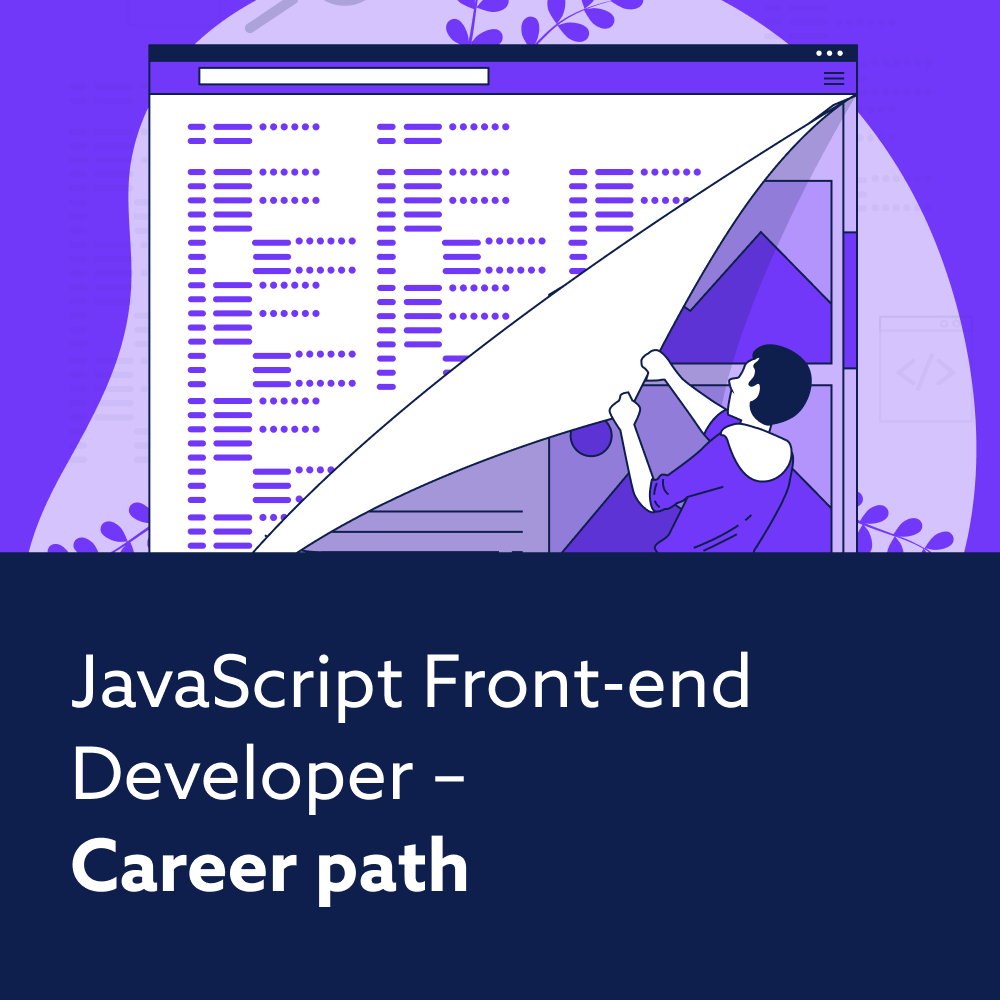
Autor: 08.02.2024
Five JavaScript Frameworks and Libraries Worth Knowing in 2024
JavaScript remains the key language for building web applications. Users expect increasingly better and more efficient applications, while developers continually seek better tools for their work. In this context, the development of JavaScript libraries and frameworks becomes crucial for effective application design and building.
In this article, we'll highlight five popular tools worth noting if you are seriously considering a career as a JavaScript Developer.
React
React, created by Facebook, is a powerful library for creating user interfaces.It is based on modular components, allowing a flexible and encapsulated approach to application structure. Utilizing a virtual DOM, React minimizes operations on the actual DOM tree, resulting in excellent performance. The unidirectional data flow facilitates control over the application state.
In 2024, React will remain the undisputed leader in building dynamic front-end applications. If you're thinking of becoming a JavaScript Front-end developer, learning React is definitely worth considering. There is an increasing demand for developers familiar with this library.

With our focused learning approach, you'll dive into the world of React development, mastering core React concepts.
Learn moreVue.js
Vue.js is a framework gaining popularity due to its elegance and simplicity. Its main advantage is easy integration with existing projects and an intuitive syntax, making it friendly for developers of varying experience levels. Vue.js is based on components, enabling a modular approach to building user interfaces.
Angular
Developed by Google, Angular stands out as a comprehensive tool for creating complex front-end applications. Its MVC (Model-View-Controller) architecture offers advanced features such as routing, form validation, and complex dependency management. Angular brings stability and structural clarity to projects, particularly beneficial for larger applications. Despite a higher entry threshold, Angular maintains its position as a powerful tool for projects requiring a comprehensive approach to front-end development. Angular still has a strong market share, and demand for developers working with this framework will persist for many years.
Svelte
Svelte is another tool for creating dynamic user interfaces. It is relatively easy to learn and can be used by both beginners and more advanced developers.
Svelte offers a fresh approach to web application development. Traditional tools like React or Angular perform most of the work in the end user's browser. Svelte, on the other hand, compiles the source code and generates optimized output. The immediate result is enhanced performance. Svelte is an intriguing solution for developers looking to learn something new and break away from conventional patterns.
Deno
Created by the founder of Node.js, Ryan Dahl, Deno is a modern runtime environment offering a fresh perspective on how we use JavaScript and TypeScript. Deno provides several improvements compared to Node.js, such as better module handling, built-in security, and eliminating the need for external package managers.
With its modern approach to modules, dependency management, and built-in security system, Deno is gaining popularity as an alternative to traditional JavaScript runtime environments. For those desiring a fresh perspective on executing JavaScript code outside the Node.js environment, Deno can be a highly interesting tool.
What's the Difference Between a Framework and a Library?
Finally, it's worth asking the important question: what is the difference between a framework and a library? Why do we call React.js a "library," and Angular a "framework"?
Framework
- It is a comprehensive environment that imposes structure and controls the flow of control in an application.
- Offers ready-made solutions, such as routing systems, state management, or project structure.
- Often uses inversion of control, deciding when and how to invoke user code.
Library
- It is a set of tools for use in an existing project without imposing a structure or a complete environment.
- Does not rely on inversion of control, giving the programmer full control over when and where to use library functions.
- Provides specific functionality without imposing conventions or code structures.
In a simplified manner, a framework is "heavier," with more functionality and imposes certain ways of writing code. In contrast, a library is "lighter," with fewer features, allowing greater flexibility in code writing. In practice, this boundary is quite fluid, and some developers constantly debate whether a particular tool should be classified as a framework or a library.
Summary
The overview above has demonstrated the capabilities offered by popular frameworks, libraries, and JavaScript tools in 2024. Additionally, you now understand the difference between a framework and a library. JavaScript is an incredibly dynamic ecosystem. To stay relevant, one must regularly follow trends and pay attention to the potential of new tools.














